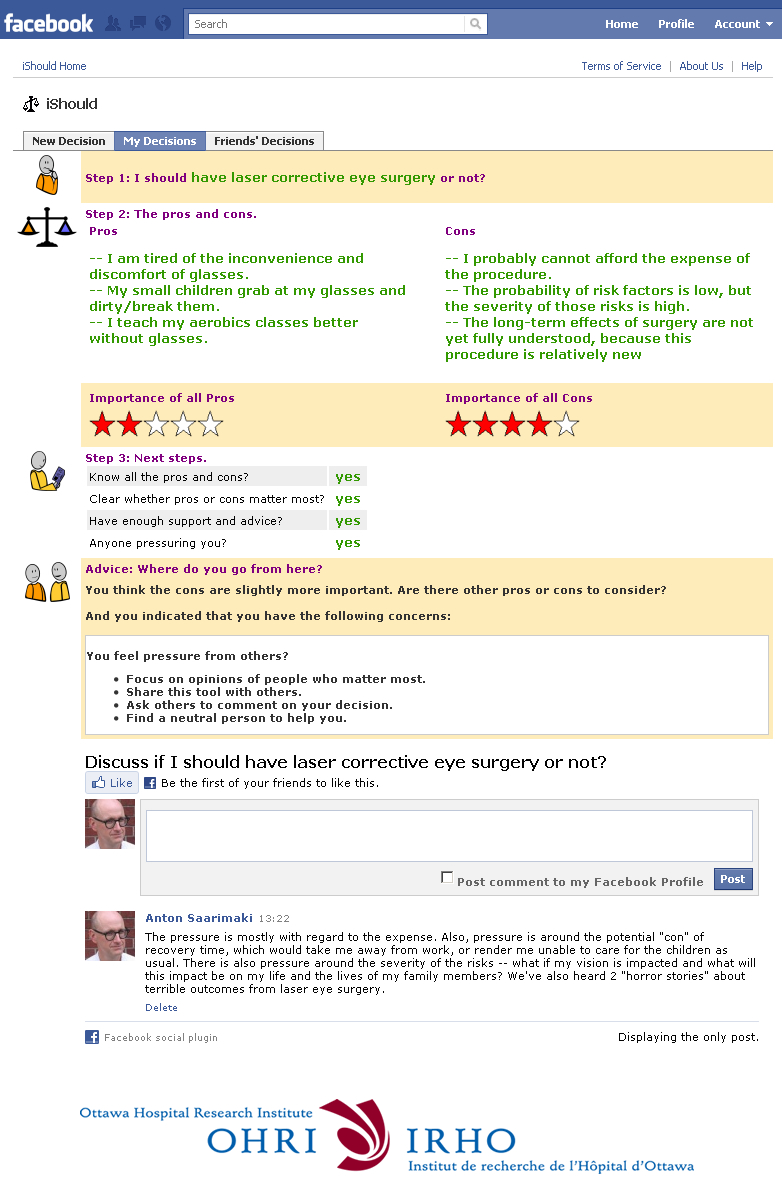Entries in Decision Support eHealth (44)
Seven Mobile Health Engagers
 September 15, 2010
September 15, 2010  We see it every day and everywhere. Consumers are engaged with their mobile phones at restaurants, at the gym, by the pool, in parked cars and in the hallway outside of the doctor’s office. They have a strong need to stay connected and use every free moment to review and respond to messages as well as access online information through their mobile phones.
We see it every day and everywhere. Consumers are engaged with their mobile phones at restaurants, at the gym, by the pool, in parked cars and in the hallway outside of the doctor’s office. They have a strong need to stay connected and use every free moment to review and respond to messages as well as access online information through their mobile phones.
Over the past 6 months, I have heard health care providers, health plans, health care technology companies and employers express strong interest in reaching, engaging and influencing consumers through mobile health applications. Although mobile committees have been formed, most are in the beginning stages of identifying and prioritizing the applications that they will develop and deliver to consumers.
Seven Mobile Health Engagers:
Here are seven key capabilities that companies will want to build into their mobile health applications:
1. Guiding- Sending personalized alerts and reminders for motivating specific actions such as taking medications, testing blood sugar levels or participating in healthy behaviors (e.g. lunch time walk with co-workers).
Consumer perspective: What do I need to do to meet my health needs and goals?
2. Educating- Providing access to a customized set of health information, pushing informational tips based on needs, interests and profile and testing health information knowledge.
Consumer perspective: How can you make learning about my health fun, personalized and easy to understand?
3. Encouraging- Delivering support messages from my social network, clinician and health coach.
Consumer perspective: How can you support me in reaching my health goals at the right time?
4. Consulting- Enabling access to a live discussion with my clinician, health coach or mother’s caregiver.
Consumer perspective: How can you connect me with experts for real time communication and collaboration?
5. Monitoring- Capturing and viewing information about my mood, pain levels, symptoms, activity levels, diet and sleep.
Consumer perspective: How can you help me aggregate and organize all of my health information so that I can see patterns to experience “aha moments”?
6. Deciding- Accessing a decision support tool about my treatment options or viewing my PHR with links to relevant and "in context" content.
Consumer perspective: How can I make better decisions by combining my own information with trusted expert sources and accessing this wherever I am?
7. Managing- Delivering customized messages to help me effectively plan and respond to our health care needs.
Consumer perspective: How can I change from being reactive to becoming proactive about my health and the health of my family?
Generating Your Mobile Health Momentum…
How can you define and design these mobile applications to be most valuable to your target consumers? Unlike many of the mini-applications that consumers can buy in online stores, you have an opportunity to connect these capabilities such as “monitoring” and “deciding” so that consumers can not only track their activity but also make decisions with the patterns of data that emerge.
Think about how you can use “personalization” with your mobile health applications to motivate consumers to stay engaged in their health. How can you help consumers use their mobile phone to communicate and collaborate with their support network and caregivers for better health outcomes?
How far along are you with your mobile health strategies? Have you selected your priority consumer segments? Have you conducted research to deeply understand their needs, mobile behaviors and attitudes? Have you conceptualized, defined and validated a solution for each segment? Are you ready to pilot the solution with the target segment? Have you defined your measurements for success?
With experience and industry knowledge in the mobile health space, how I can help you move your mobile initiatives forward?
Read more about my mobile health technology expertise.
Social Media Meets Shared Decision Making with iShould
 July 27, 2010
July 27, 2010  While taking a walking this beautiful afternoon, I noticed a frail elderly woman inching forward on the sidewalk in front of me as her aide held her arm securely around the senior’s tiny waist.
While taking a walking this beautiful afternoon, I noticed a frail elderly woman inching forward on the sidewalk in front of me as her aide held her arm securely around the senior’s tiny waist.
Although you and I may not need physical support to move ahead, imagine the feeling that you are heading in the right direction, with guidance each step of the way.
During my panel last week on “New Models for Social Media”, I shared an example of an interesting approach which is at the intersection of social media and decision support. With the “iShould” application developed by the Ottawa Hospital Research Institute (OHRI), you can reach out online to your own social network to gather input for your health decision. If for example you are considering corrective eye surgery, you can bring those you trust into your decision process. On this Facebook application, you fill in the decision, list and rate the pros and cons and select friends to comment. This invites support around your decision.
I do believe that this application can be most valuable when you are asking friends who have experience with your health decision so that they can provide insightful comments for your consideration.
Successfully Engaging Teens Through Mobile For Better Health
 July 16, 2010
July 16, 2010  Over the weekend I had dinner with close friends who told me about their teenage daughter and her sleepover with few girl friends. “All three of the girls had their cell phones lined up and plugged in a charging side by side on the night table”. Even when they are sleeping, teens keep their cell phones close by. While awake, these “digital natives” are continuously connected which provides opportunities for reaching and engaging teens in their health.
Over the weekend I had dinner with close friends who told me about their teenage daughter and her sleepover with few girl friends. “All three of the girls had their cell phones lined up and plugged in a charging side by side on the night table”. Even when they are sleeping, teens keep their cell phones close by. While awake, these “digital natives” are continuously connected which provides opportunities for reaching and engaging teens in their health.
Strong Statistics on Teen Mobile Usage
In Pew’s latest study of 12- 17 years old teens, there are interesting insights about teen's use of mobile technologies:
- Teens Have Mobile Phones. “Three-quarters (75%) of teens now have a cell phone”.
- Teens Texting for Connection. “Fully 72% of all teens – or 88% of teen cell phone users — are text-messages. That is a sharp rise from the 51% of teens who were texters in 2006.”
- Teens Texting Daily. Each day, 54% of teens text compared with 25% using social networking sites.
- Girls Texting Much More. Teenage girls tend to send and receive more texts each day, 80 compared with 30 for boys.
- Minority Teens Use Mobile for Internet Access. “44% of black teens and 35% of Hispanic teens use their cell phones to go online, compared with 21% of white teens”.
Influencing the Health of Mobile Teens
Organizations have been researching and piloting programs to learn how to impact the teen’s health behaviors for better outcomes.
After a successful pilot, the Murdoch Children’s Research Institute (MCRI) with the Telstra Foundation rolled out a program for teens (and young adults) that uses mobile to monitor their mental health including stress levels, coping strategies, dietary and fitness factors.
The NY Times reports that Mount Sinai Hospital has researched and learned that sending text messages to young liver transplant patients can improve their medication adherence and “avoid life-threatening complications”.
Partner’s Center for Connected Health recently ran a pilot with pregnant teens with the goal of using mobile for outreach. OB Case management sent SMS text messages about proper pre-natal care and regiments. These messages were educational and prompted the teens to take an action such as attend an office visit. “We learned that the texting strengthened the relationship- 83% reported feeling more supported by the health center case manager”, explains Alex Pelletier, Team Lead, Program and Product Development at Partners. More about this pilot from Alex on my upcoming World Congress panel, Generating Mobile Engagement Through Consumer Segmentation, Crowd Sourcing and Personalization.
Future Mobile Teen Projects:
The Robert Wood Johnson Foundation recently granted $2.4M to mobile health project including one from the San Francisco State University – San Francisco, California targeting teens from low-income backgrounds who experience much higher rates of obesity. To help these teens manage their obesity and depression, the University will evaluate the capturing of observations of daily living (ODLs) through smart phones and sharing of the data with their care team for planning and care management.
Teens are dealing with many different health issues while on the go managing their busy lives. Their health concerns span their physical and mental health which may include juvenile diabetes, obesity, asthma, sexual health problems and even autism.
How is your organization targeting this segment of “digital natives” around health? How are you leveraging mobile technologies to reach, influence and impact them to have healthier bodies and minds?
Series: Engagement Path #3- Motivate & Guide Me
 April 7, 2010
April 7, 2010  Healthcare organizations are realizing they can leverage technology to help personalize the experience with needed motivation and guidance. Consumers benefit from expert information and tools tailored to their individual goals and interests. These personalized resources not only motivate but also guide the consumer through their “decisions of daily living”. They need guidance when determining how to eat more healthy, improve their fitness as well as manage their stress.
Healthcare organizations are realizing they can leverage technology to help personalize the experience with needed motivation and guidance. Consumers benefit from expert information and tools tailored to their individual goals and interests. These personalized resources not only motivate but also guide the consumer through their “decisions of daily living”. They need guidance when determining how to eat more healthy, improve their fitness as well as manage their stress.
“Help me set realistic fitness goals and give me ongoing feedback on my progress.”
“Just tell me what to do to lose the weight.”
“Keep reminding me about ways to lower my cholesterol.”
“Help me find way to improve my sleep.”
“Motivate & Guide Me” Opportunity: Gain commitment, proactively push to reach goals, deliver actionable information, provide decision support tools and share ongoing feedback.
Engagement in Action:
- Wellcoaches offers a high touch service enabled by technology which puts the consumer in control of their plan and progress towards goals. The Wellcoach continues to hold their client “accountable” for making needed changes to reach these goals. Armed with insight about the consumer’s preferences for exercise and diet, the coach constantly pushes for progress incorporating these preferences into the plan. In addition, the Wellcoach serves as a cheerleader celebrating accomplishments along the way.
- Sensei leverages technology to deliver a personalized experience for weight loss. The “virtual dietician” recommends meals based on the consumer’s stated food preferences and lifestyle. Sensei pushes out the fitness message as a reminder for today’s activity plan “motivational messages” showing progress toward the goal and “behavior” messages to focus the consumer on healthy alternatives. MySensei provides access to tools including a shopping list to motivate healthier food choices.
Motivation is individual and varies based on the consumer’s unique set of health issues and readiness for change at that time. Even consumers who are self-motivated need information and tools to guide them and help them confidently navigate the decisions when coming to a fork in the road.
Most consumers need a more comprehensive solution which responds to triggers for need, delivers personalized information and tracks effectiveness to inform future touches.



